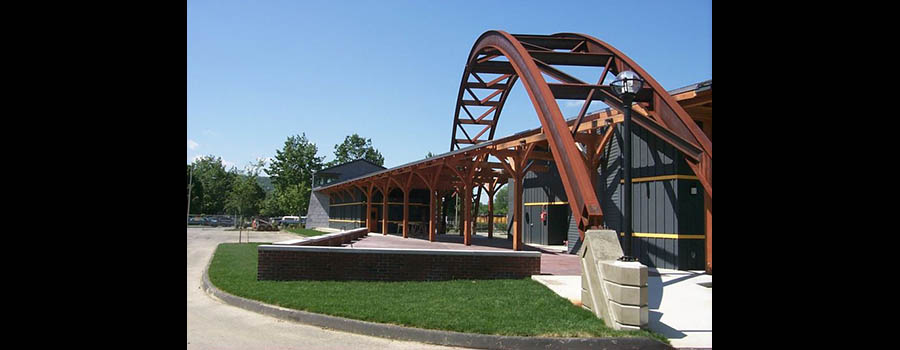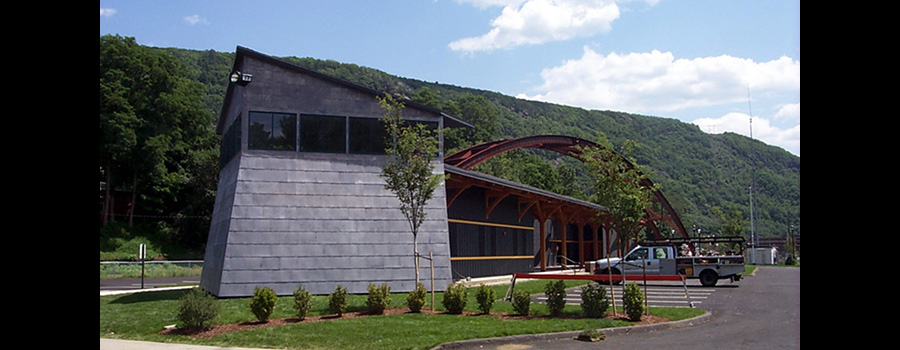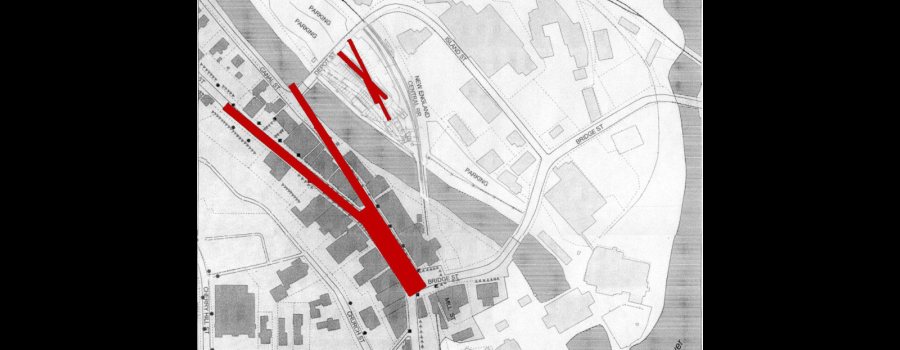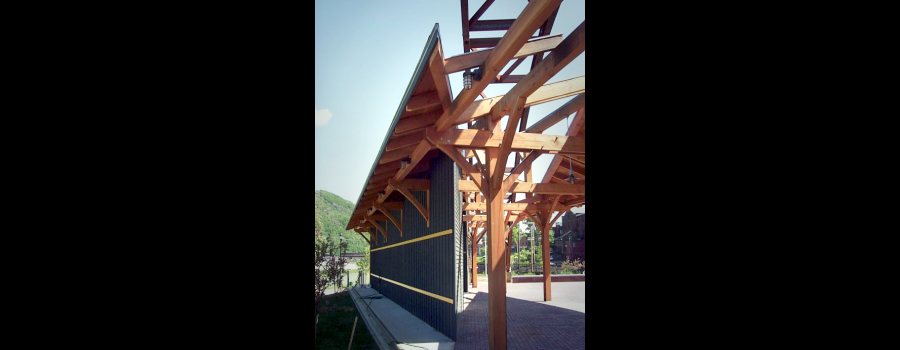WAYPOINT INTERPRETIVE CENTER
Bellows Falls, VT
Reference: Robert McBride, Director Rockingham Arts and Museum Project
The town plan for Bellows Falls, VT captures the elemental qualities of the man-made efforts to civilize a wild landscape and in the process creates a dynamic downtown space that rivals the best in America and Europe. The gnarly ridge of Fall Mountain, the convoluted flow of the Connecticut River, the up-river and down-river flow of the railroad lines, the great rush of water over the Falls and through the canal to the power station, and the local streets all seem to parallel each other in a horizontal rush down river. In a contrasting act of permanence, the Rockingham Town Hall tower plants itself vertically – it is not going downstream. The dynamic passing of Rockingham and Canal Streets creates an urban space that is as strong and vital as the geological formations from which it has risen. The Waypoint Center design layout is essentially a distillation of the town layout. Here the metaphors of bridges and trains cross creating a ‘town’ square, a patio meeting area for functions like the farmer’s market. Bisecting the platform, the sidewalk becomes a rendition of the old Arch Bridge, which had graced the community for much of the last century. The history of the town has not been lost, but brought back to put the present in context with the past. William Morgan, an architectural historian and critic, recently wrote this about our current Waypoint Center project and its impact on the community of Bellows Falls:
“Bellows Falls has created a bold new piece of architecture that captures and enhances the spirit of the place. … Too many tired cities have desperately tried to stem decay with convention centers or sports arenas. Concert halls and museums have achieved happier results. Frank Gehry’s Guggenheim Museum has lured flocks of tourists to Bilbao, Spain, while Massachusetts Museum of Contemporary Art has given North Adams a real boost. The Bellows Falls Waypoint Interpretive Center is far more modest, but its impact may be similarly dramatic.”




